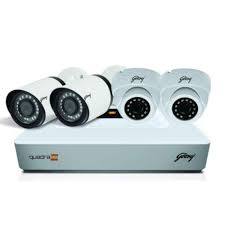Cameras have become an integral part of our lives, capturing precious moments and preserving memories. From the early days of film cameras to the modern digital era, cameras have evolved significantly, offering a wide range of features and capabilities.
One of the most significant advancements in camera technology is the transition from film to digital. Digital cameras have revolutionized photography, allowing users to instantly view and edit their images without the need for developing film. This has made photography more accessible and convenient for everyone.
The quality of digital images has also improved drastically over the years. With higher resolutions and advanced image sensors, modern digital cameras can capture stunning details and vibrant colors. Whether you’re a professional photographer or an amateur enthusiast, these advancements enable you to take breathtaking photos with ease.
Another notable feature in today’s cameras is their versatility. From compact point-and-shoot cameras to professional DSLRs (Digital Single-Lens Reflex), there is a camera for every skill level and purpose. Compact cameras are perfect for casual photography on-the-go, while DSLRs offer more manual control and interchangeable lenses for creative flexibility.
In addition to capturing still images, many modern cameras also come equipped with video recording capabilities. This allows users to capture memorable moments in motion, whether it’s a family gathering or a scenic landscape. The ability to switch seamlessly between photo and video modes makes these cameras versatile tools for capturing various types of content.
Furthermore, camera technology has expanded beyond traditional handheld devices. Nowadays, smartphones are equipped with high-quality built-in cameras that rival dedicated point-and-shoot cameras. This has made photography even more accessible as people can capture stunning images using just their smartphones.
With the rise of social media platforms like Instagram and Facebook, sharing photos has become an essential part of our daily lives. Cameras now come with built-in Wi-Fi or Bluetooth connectivity options that allow users to instantly transfer their photos to smartphones or other devices for quick sharing on social media platforms.
Moreover, the advent of advanced editing software has further enhanced the capabilities of cameras. With features like image stabilization, HDR (High Dynamic Range), and various creative filters, photographers can enhance their images and add artistic touches without the need for external editing software.
In conclusion, cameras have come a long way, transforming the way we capture and share memories. From film to digital, from point-and-shoot to DSLRs, and from standalone devices to smartphones, cameras have evolved to meet our ever-changing needs. With their improved image quality, versatility, and connectivity options, cameras continue to inspire creativity and enable us to preserve moments that will be cherished for a lifetime.
7 Essential Camera Tips for Beginners
- Read the manual
- Use a tripod
- Adjust the ISO
- Adjust the white balance
- Use burst mode
- Experiment with different lenses
- Don’t forget about composition
Read the manual
When it comes to using a new camera, one of the most important tips is often overlooked – read the manual. Many people are eager to start using their new camera right away and skip the step of familiarizing themselves with its features and functions. However, taking the time to read the manual can greatly enhance your photography experience.
Camera manuals provide valuable information about the specific features and capabilities of your camera model. They explain how to navigate through different settings, adjust exposure, focus properly, and utilize various shooting modes. By reading the manual, you can gain a deeper understanding of your camera’s functionality and maximize its potential.
Furthermore, camera manuals often contain tips and tricks for capturing better photos. They may provide insights on composition techniques, exposure compensation, white balance adjustments, and other helpful advice. These tips can help you take your photography skills to the next level and improve the overall quality of your images.
Additionally, reading the manual can prevent potential mistakes or accidents. It may include instructions on how to properly handle and maintain your camera, as well as warnings about certain conditions or situations that could damage it. Being aware of these guidelines will ensure that you use your camera safely and prolong its lifespan.
Even if you have prior experience with cameras or have used similar models before, each camera has its unique features and settings. Reading the manual allows you to fully understand how to utilize these specific functions effectively.
In conclusion, taking the time to read the manual is a simple yet crucial tip for getting the most out of your camera. It provides essential information about your camera’s features, offers valuable tips for better photography, helps prevent mishaps, and ensures that you make full use of its capabilities. So before you start snapping away with your new device, dedicate some time to reading the manual – it will be worth it in the long run!
Use a tripod
Using a tripod is a simple yet effective tip that can greatly enhance your photography experience. A tripod is a three-legged stand that provides stability and support for your camera. Here are some reasons why using a tripod can make a significant difference in your photography:
- Stability: One of the main advantages of using a tripod is that it eliminates camera shake caused by hand movements. Even the slightest movement can result in blurry images, especially in low-light conditions or when using slower shutter speeds. By mounting your camera on a tripod, you ensure stability, resulting in sharper and clearer photos.
- Long Exposures: When shooting in low light or capturing motion blur, using longer exposure times is necessary. However, holding the camera steady for an extended period can be challenging without a tripod. With a tripod, you can easily set longer exposure times without worrying about camera shake, allowing you to capture stunning nightscapes or silky smooth waterfalls.
- Composition: A tripod allows you to carefully compose your shots with precision and accuracy. It helps maintain consistent framing and level horizons, ensuring that your images are well-composed and visually pleasing. With the ability to adjust the height and angle of the tripod, you have more control over the composition of your photographs.
- Self-Portraits and Group Photos: If you enjoy taking self-portraits or want to be part of group photos, a tripod becomes an essential tool. It allows you to set up your camera at the desired distance and angle, giving you the freedom to join in on the photo without relying on someone else to hold the camera.
- Experimentation: Using a tripod opens up opportunities for creative experimentation in photography. It enables you to try different techniques like time-lapse photography, multiple exposures, or focus stacking with ease and precision.
Investing in a good quality tripod is worth considering as it will serve as a reliable companion for all types of photography situations. Whether you’re a professional photographer or an amateur enthusiast, using a tripod can elevate the quality of your images and expand your creative possibilities. So, next time you’re out with your camera, don’t forget to bring along your trusty tripod for stable and stunning shots.
Adjust the ISO
Adjusting the ISO setting on your camera can greatly impact the quality of your photographs. ISO refers to the sensitivity of your camera’s image sensor to light. By understanding and utilizing this feature effectively, you can capture stunning images in various lighting conditions.
The ISO setting ranges from low to high values, typically starting at 100 or 200 for low sensitivity and going up to 1600, 3200, or even higher for high sensitivity. When shooting in bright conditions or when there is ample natural light available, it is recommended to use a lower ISO setting. This helps maintain image quality by reducing the amount of noise or graininess in the final photograph.
On the other hand, in low-light situations where there isn’t enough available light, increasing the ISO can help capture brighter images without having to rely heavily on artificial lighting or using slower shutter speeds. However, it’s important to note that higher ISO settings may introduce more noise into your photos.
To strike a balance between image quality and capturing enough light, it’s essential to experiment with different ISO settings based on the lighting conditions you encounter. Modern cameras often offer a range of auto-ISO options that automatically adjust the sensitivity based on the detected lighting conditions. This can be helpful for quick shots but may not always produce optimal results.
Understanding how ISO interacts with other camera settings like aperture and shutter speed is crucial for achieving desired outcomes. For instance, if you’re shooting in low-light conditions and want to avoid motion blur, you may need to increase the ISO while also selecting a wider aperture or using a slower shutter speed.
In summary, adjusting the ISO setting on your camera allows you to control its sensitivity to light and capture well-exposed photographs in different lighting scenarios. By finding an appropriate balance between image quality and brightness requirements, you can make full use of this feature and elevate your photography skills.
Adjust the white balance
When it comes to capturing the perfect photograph, one important tip to keep in mind is adjusting the white balance on your camera. White balance refers to the color temperature of the light in a scene, which can greatly affect the overall look and feel of your images.
Different light sources emit light with varying color temperatures. For example, natural daylight has a cooler, bluish tone, while indoor lighting tends to have a warmer, yellowish hue. When the white balance is not properly adjusted, these color temperature differences can result in images that appear too warm or too cool.
By adjusting the white balance on your camera, you can ensure that the colors in your photographs appear accurate and true to life. Most cameras offer several white balance presets such as daylight, cloudy, tungsten, fluorescent, and flash. These presets are designed to compensate for different lighting conditions and help you achieve more accurate colors.
If you’re shooting in automatic mode, your camera will typically try to determine the correct white balance based on its internal settings. However, relying solely on automatic settings may not always produce the desired results. It’s best to take control and manually adjust the white balance according to the specific lighting conditions you are shooting in.
To manually adjust white balance on most cameras, you can access the settings menu and select “white balance” or “WB.” From there, you can choose from preset options or even set a custom white balance by using a neutral gray card or an object with known neutral colors as a reference point.
Taking a few extra moments to adjust the white balance before capturing your shot can make a significant difference in how your final image appears. It helps ensure that whites appear truly white and that other colors remain faithful to their natural tones.
So next time you’re out capturing moments with your camera, remember to pay attention to the white balance setting. By making this simple adjustment, you’ll be able to enhance the overall quality of your images and create photographs that truly reflect the beauty of the scene you’re capturing.
Use burst mode
If you want to capture fast-moving subjects or ensure you don’t miss a perfect shot, then burst mode is a tip you should consider using with your camera. Burst mode allows you to take a rapid series of photos in quick succession with just one press of the shutter button.
By using burst mode, you increase your chances of capturing the perfect moment, especially in situations where timing is crucial. Whether it’s capturing a sports event, wildlife in action, or even children playing, burst mode ensures that you have multiple shots to choose from.
One of the advantages of burst mode is that it helps reduce the risk of blurry photos caused by camera shake or subject movement. With multiple shots taken within milliseconds, you have a higher chance of getting at least one clear and sharp image.
Furthermore, burst mode allows you to capture a sequence of events or expressions. This can be particularly useful for storytelling purposes or creating dynamic photo collages. You can review the series later and select the best images that tell the story or showcase the progression of an event.
It’s important to note that burst mode can result in a large number of photos being captured within a short period. Therefore, it’s essential to manage your storage space and regularly transfer and back up your images to avoid running out of space on your memory card.
To use burst mode effectively, familiarize yourself with your camera’s settings and capabilities. Some cameras offer different burst modes such as high-speed continuous shooting or customizable frame rates. Experiment with these modes to find what works best for your specific needs.
In conclusion, burst mode is a valuable feature that can significantly improve your photography skills. It allows you to capture fast-moving subjects, reduce motion blur, and tell compelling visual stories through sequences of images. So next time you’re faced with a situation where timing is crucial, don’t hesitate to activate burst mode on your camera and increase your chances of capturing that perfect shot.
Experiment with different lenses
When it comes to photography, one of the most exciting aspects is experimenting with different lenses. Lenses play a crucial role in shaping the final image, allowing photographers to capture various perspectives and create unique visual effects.
The choice of lens can dramatically impact the composition, depth of field, and overall look of a photograph. By trying out different lenses, photographers can explore and expand their creative boundaries.
Wide-angle lenses, for example, are perfect for capturing expansive landscapes or fitting a large group of people into the frame. They provide a broader perspective and can create a sense of depth in the image. On the other hand, telephoto lenses allow photographers to zoom in on distant subjects, making them ideal for wildlife photography or capturing details from afar.
Prime lenses with fixed focal lengths offer excellent image quality and are often favored for portrait photography. They allow photographers to achieve a shallow depth of field, resulting in beautifully blurred backgrounds that make the subject stand out.
Macro lenses are designed specifically for close-up photography. They enable photographers to capture intricate details of small subjects like flowers or insects with stunning clarity.
Experimenting with different lenses also allows photographers to explore various photographic styles. For instance, fisheye lenses can produce distorted and exaggerated perspectives, adding a unique and artistic touch to images. Tilt-shift lenses offer the ability to control focus and perspective creatively, making them popular among architectural and product photographers.
It’s important to remember that each lens has its strengths and limitations. Some lenses may be better suited for specific types of photography than others. By trying out different lenses in various shooting situations, photographers can gain a better understanding of their capabilities and how they can be utilized effectively.
So next time you’re out with your camera, don’t hesitate to experiment with different lenses. Whether it’s capturing sweeping landscapes or focusing on intricate details, each lens will offer a new perspective and open up endless possibilities for creative expression. Embrace the versatility that different lenses bring to your photography and let your imagination soar.
Don’t forget about composition
When it comes to photography, one aspect that often gets overlooked is composition. While the quality of the camera and its settings play a crucial role in capturing a great photo, the way you compose your shot can make all the difference.
Composition refers to how elements are arranged within the frame of your photograph. It involves considering factors such as balance, framing, leading lines, and the placement of your subject. By paying attention to these compositional techniques, you can create visually appealing and captivating images.
One important rule of composition is the “rule of thirds.” Imagine dividing your frame into a grid of nine equal parts with two horizontal lines and two vertical lines. The rule suggests placing your subject or points of interest along these lines or at their intersections. This creates a sense of balance and visual interest in your photograph.
Another aspect to consider is framing. Using elements within the scene to frame your subject can add depth and draw attention to it. This could be anything from natural frames like tree branches or architectural elements like windows or doorways. Experimenting with different framing techniques can add a unique touch to your photographs.
Leading lines are another powerful composition tool. These are lines within the image that guide the viewer’s eye towards the main subject or points of interest. Leading lines can be straight or curved, such as roads, fences, or even patterns on the ground. Utilizing leading lines helps create a sense of depth and adds visual impact to your photos.
Additionally, paying attention to balance in your composition is crucial. Balance refers to distributing visual weight evenly across the frame. You can achieve this by placing objects or subjects strategically within the frame so that they complement each other and create harmony in the image.
Lastly, don’t forget about negative space. Negative space refers to areas in your photograph that are intentionally left empty or unoccupied by subjects or objects. This empty space can help emphasize your main subject and give it room to breathe within the frame.
By keeping these composition tips in mind, you can elevate your photography skills and create more visually compelling images. So, the next time you pick up your camera, take a moment to consider how you can compose your shot to capture the essence of your subject and tell a captivating story. Remember, great composition can transform an ordinary photo into a work of art.



